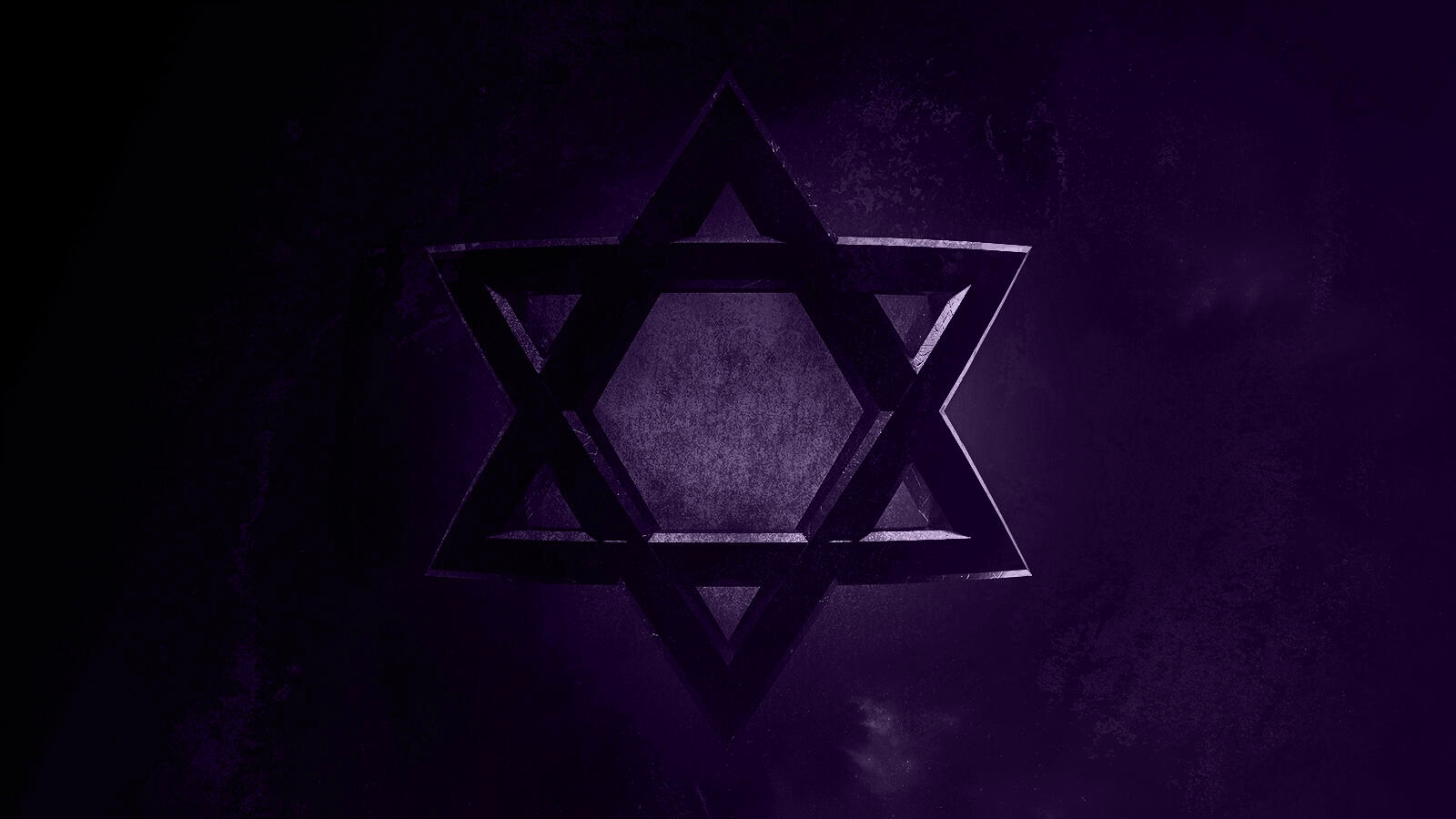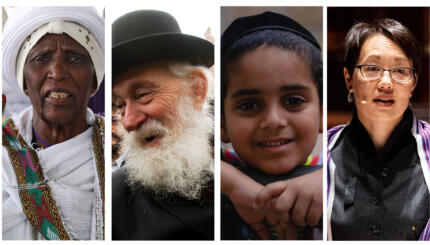The fact that Jewish identity was not widely discussed until the mid-20th century, a period when anti-Semitism was broadly in decline in America, is one indication that the two concepts are closely related. Many American Jews who came of age in an earlier period, when anti-Semitism was seen as a more urgent threat, forged their identities as Jews in ways that explicitly marked it as a response to persecution. Others saw their Judaism as a burden and sought to cast it off entirely.
Yet even in periods when anti-Semitism was low, its persistence in Jewish memory and imagination continued to exert a formative influence on Jewish identity. For American Jews who came of age during such periods, stories of persecution or anti-Semitism abroad exerted a gravitational pull on their sense of Jewishness. Indeed, a 2013 Pew Survey of American Jews revealed that Holocaust remembrance was the most oft-cited element of what it means to be Jewish, even higher than leading an ethical life.
To some extent, a lack of proud Jewish identity seemed only natural in the dark days of the 1930s. When Mordecai Kaplan, the founder of the Reconstructionist movement, put forth his “conception of Judaism for our day” in his 1934 work Judaism as a Civilization, he wrote that “the number of Jews who regret they are not Gentiles is legion.” Kaplan described a “sense of inferiority and self-contempt which is eating like a canker into the Jewish soul.” For many Jews, Kaplan believed, Judaism is seen as a burden. “Since their Jewish origin stands in the way of their happiness and ambition,” he wrote, “how can they help deploring it?”
Kaplan’s response was to try to create meaningful Judaism, but this was not the only route toward proud Jewish identity in the coming decades. Indeed, anti-Semitism led many secular Jews to stand firm as Jews even in the absence of Jewish education and religious practice. Countless mid-century American Jews articulated a link between Jewish persecution and their own emergent sense of identity.

Help us keep Jewish knowledge accessible to millions of people around the world.
Your donation to My Jewish Learning fuels endless journeys of Jewish discovery. With your help, My Jewish Learning can continue to provide nonstop opportunities for learning, connection and growth.
“Adolf Hitler has done more to strengthen, to unite, to solidify and to spiritualize the Jews of the world than any other man since Moses,” the bestselling Jewish novelist Edna Ferber wrote in her 1939 autobiography. In the same vein, Ben Hecht, the Academy Award-winning screenwriter, declared in characteristically bold fashion that he “became a Jew in 1939,” as his biographer Adina Hoffman writes. Figures like Anne Frank and Rabbi Leo Baeck, who had emerged from the Holocaust with heroic images, further inspired pride among American Jews. The memory of anti-Semitism constituted the ground floor in the building of many a Jewish identity.
Though overt anti-Semitism waned in the period after World War II, it continued to inform the construction of Jewish identity. For playwright and screenwriter Arthur Laurents (of West Side Story and The Way We Were fame), figuring out how to portray the connection between anti-Semitism and Jewish identity became a recurring theme of his work. Laurents’ first play, Home of the Brave, which premiered in 1949, was criticized by the Anti-Defamation League because the Jewish protagonist seemed overly neurotic in the face of anti-Semitism. “I thought the hero behaved as he did because that was how Jews behaved in the face of the prejudice the ADL itself was always battling,” Laurents responded.
Jewish identity was not so secure at the time that it could handle less than flattering portrayals. But toward the end of his career, in the 1990s, Laurents felt he had finally learned to express the unique dynamic between Jewish identity and anti-Semitism. In My Good Name, one of his last plays, the Jewish character explains, “I’m Pavlov’s Jewish dog. When the bell rings, I come out fighting. I think that’s what any Jew worth being a Jew does.” For the secular Laurents, as for so many others, Jewish identity was forged through experiences with anti-Semitism.
Like Kaplan, postwar Jewish leaders were motivated by this seemingly negative inspiration for Jewish identity to promote more positive foundations for Jewish identity, particularly those rooted in serious understandings of Judaism. In the years after World War II, a genre of introduction to Judaism books emerged that sought to shift the focus of conversations about Jewishness from anti-Semitism to the riches of Judaism and Jewish heritage. In so doing, they helped transform the postwar understanding of Jews from members of a persecuted race to members of America’s “third faith.” What had been seen as a burden was coming to be seen as a privilege.
Another attempt to reframe Judaism in more affirmative terms was reflected in the movement for Soviet Jewry, which began in the mid-1960s. The writer Yossi Klein Halevi, a young activist in the movement, has observed that those behind the struggle for Soviet Jews were not just inspired by the persecution of their coreligionists abroad, but also by the shame of earlier generations’ passivity in the face of the Holocaust. The movement, Halevi writes, fostered “a beautiful symbiotic relationship … between the freest Jews in the Diaspora and the most oppressed.”
This changed climate, in terms of both diminished anti-Semitism and more affirmative expressions of Jewish identity, was apparent on a range of cultural fronts—including sports. Hank Greenberg’s refusal to play baseball on Yom Kippur in 1934, a period when anti-Semitism was raging in both Europe and the United States, barely registered on the cultural radar. When Sandy Koufax did the same thing 30 years later, it became a point of Jewish pride — and continued to be so even decades later.
In the last decades of the 20th century, increasing American interest in the specifically Jewish experience of the Holocaust — as evidenced by a television miniseries on the subject, the national prominence of Elie Wiesel, the 1993 opening of the U.S. Holocaust Memorial Museum, and the popularity of the film Schindler’s List — all served to legitimize American Jews’ desire for proud identity in the face of anti-Semitism. Still, with anti-Semitism at a low ebb, the sense that American Jews stood strong in the face of anti-Semitism was more theoretical than practical.
That would change in the early 21st century as anti-Semitism rose again, most dramatically with the killing of 11 people at the Tree of Life synagogue in Pittsburgh in 2018, the most deadly anti-Semitic attack in American history. In the wake of the shooting, many expressions of support were forthcoming from the wider community, including a now iconic printing of the Hebrew words of the Mourner’s Kaddish on the front page of the Pittsburgh Post-Gazette — as sure a sign of any that the attack would be met with pride and defiant assertions of Jewish identity. In a far cry from the Jewish self-contempt that Kaplan once lamented, the paper’s Jewish executive editor unapologetically defended the choice to print the prayer in a secular publication as an expression of the city’s collective grief over the deaths.
How American Jewish identity will be shaped by the resurgence of hate in recent years remains to be seen. But if the Pittsburgh paper’s response is any indication, it will not be marked by a return to the sense of inferiority and shame that inspired such concern by Jewish leaders a century ago.




